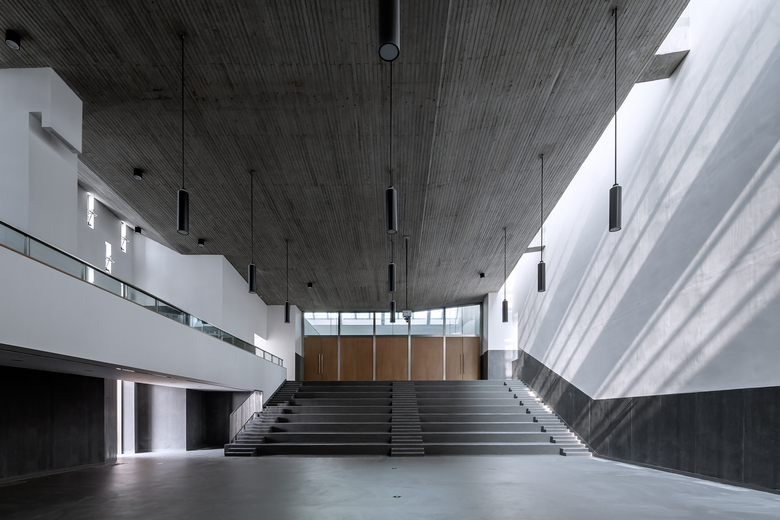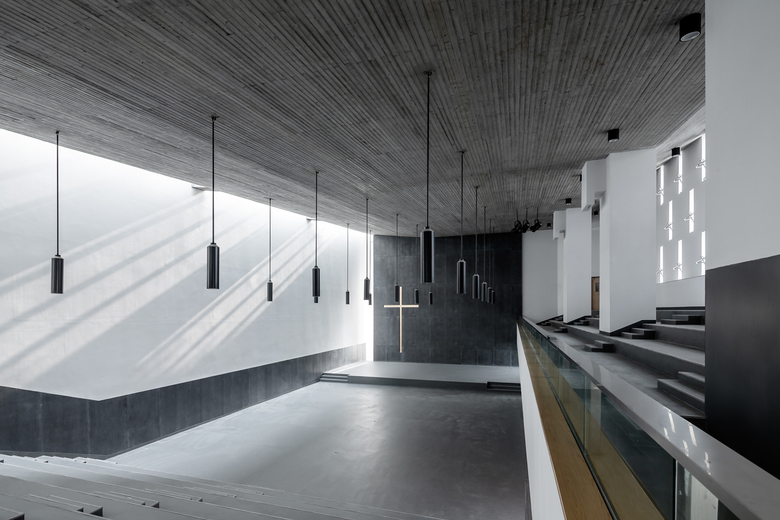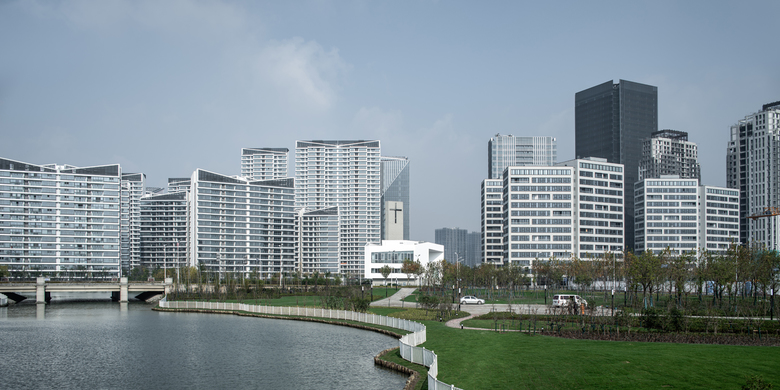A Disturbance of Monotony
Today, officially about 31 million of the 1.4 billion inhabitants of the People’s Republic of China are counted as Christians. With the economic opening-up of China in the early 1980s, the communist party used capitalist principles to marginalize the radical socialism of Mao Zedong, and in the following years many people rose from poverty to create a comparatively wealthy middle class. This positive material development, however, is countered by a search for meaning in life. The need for spiritual support in an extremely consumer-oriented societybrings new impetus to all religious communities. Some of the religious buildings emerging within this context could be considered an expression of compensation in terms of mental well-being that balances between politics, commercialism and the spiritual needs of the individual.
(Google Maps Link: https://goo.gl/maps/y4B2o7uTz512)
Built Area: 2.837 m2
Client: Shanghai New Bund International Business District Investment (Group) Co, Ltd
Architect: Iñaki Ábalos, Renata Sentkiewicz (Abalos+Sentkiewicz AS+)
Collaborators: Adrian Úbeda, Álvaro Maján, Alexander Jacobson, Eva Castiñeira, Álvaro Maján, Alejandra Salvador, Hao Chen, Chenchen Hu, Teresa Casbas, Yiqun Wang
Consultant: Pudong Design Institute
Model: Yi Zhao Model
Photography: Zhang Yong (ZYArch Photographer)
In some cases, local Christian communities have rather simple ideas about how a church should look like. The ideas of the local government for the church project in Shanghai Pudong conflicted with those of the ecclesiastical authorities, and the Madrid-based architects Abalos+Sentkiewicz AS+ where asked to find a satisfactory solution.
A further difficulty was the complex site condition. Underground subway infrastructure constrained the building to a section of the site along the main access road for the New Bund district. This gave the building the condition of an edge – between the linear park along the Huangpu River and the new urban development towards the New Bund.
In response, the architecture concept draws on the genealogy of accessible roofs of European cathedrals, such as those in Milan, Barcelona or Paris, with an interpretation whereby the roof is understood as a topographical and landscape extension of the adjacent park. A picturesque public stairway, which turns towards the front of the church, ascends to the garden roof of the building, where it creates a natural belvedere overlooking the park and the Huangpu River that also allows the gathering of the community around the celebration of outdoor ceremonies.
The central space of the complex is the main chapel. Its symbolic character as a meeting place for the community is emphasized through the integration of two types of worship spaces: the longitudinal nave of a fundamentally Catholic tradition and the Protestant auditorium, conceived around the acoustic and ceremonial role of the choir. The religious program is completed with a smaller chapel located behind the rear pews that is separated from the main nave by a movable wooden wall that can be folded open to increase the capacity of the space to 2,000 people.
A tight budget forced the materiality to be restricted to the extensive use of white plaster, and the use of the concrete for the base, bell tower and roof of the main nave. This material limitation is compensated by the strategic and precise use of purely spatial articulations, such as the filtering of natural light into the interior according to the orientation of each facade.
For architects in China, religious buildings allow for experimentation on how material, form and light can determine the atmosphere of the interior spaces. The need for reflection in a merciless commercial society requires extraordinary spaces in which niches for contemplation can open up and so oppose the purchasable character of values. A subtle stimulation by means of architecture, and an enhancement of the surroundings contribute to an architecture that gradually gains a new meaning for sections of society. In this instance, the team of Abalos+Sentkiewicz AS+ created a new anchor in the lake of urbanisation that stands out from the crowd.










